
Bruce Bower
Behavioral Sciences Writer, Science News
Bruce Bower has written about the behavioral sciences since 1984. He often writes about psychology, anthropology, archaeology and mental health issues. Bruce has a master's degree in psychology from Pepperdine University and a master's degree in journalism from the University of Missouri. Following an internship at Science News in 1981, he worked as a reporter at Psychiatric News, a publication of the American Psychiatric Association, until joining Science News as a staff writer. In 1996, the American Psychological Association appointed Bruce a Science Writer Fellow, with a grant to visit psychological scientists of his own choosing. Early stints as an aide in a day school for children and teenagers with severe psychological problems and as a counselor in a drug diversion center provided Bruce with a surprisingly good background for a career in science journalism.

All Stories by Bruce Bower
-
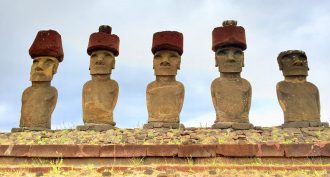 Archaeology
ArchaeologyPutting hats on Easter Island statues may have required some rock and roll
Fitting huge stone hats on 3-story-high Easter Island statues may have required only a small workforce armed with ropes and ramps.
-
 Psychology
PsychologyYour window to learn new languages may still be open
Results from an online grammar quiz suggest that people who start learning a second language at age 10 or 12 can still learn it well.
-
 Animals
AnimalsCompared to other primates, humans get little sleep
Short bouts of a sleep, called REM, separate humans from other primates, scientists find. Sleeping on the ground may have a lot to do with it.
-
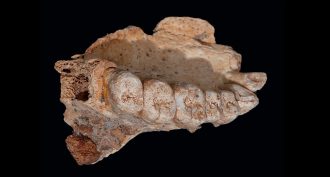 Fossils
FossilsAncient jaw suggests humans left Africa earlier than thought
A fossil jaw found in a cave in Israel is at least 177,000 years old. The scientists who found it think it shows humans left Africa much earlier than thought.
-
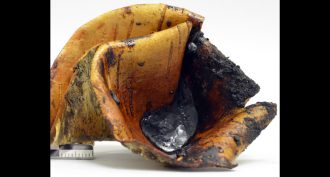 Archaeology
ArchaeologyFiery tests suggest gooey tech by Neandertals
Neandertals could have used simple methods and handy materials to make tar. It would have helped them glue their tools together.
-
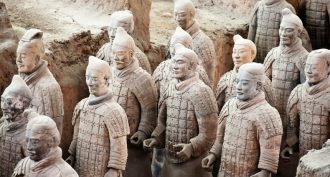 Archaeology
ArchaeologyClay reveals secrets of China’s mysterious terra-cotta army
Production of the famous terra-cotta troops found in ancient Chinese emperor’s tomb was made possible by a specialized system of clay manufacturing.
-
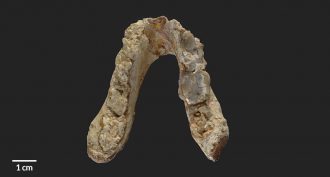 Archaeology
ArchaeologyEuropean fossils may belong to earliest known hominid
New fossils suggest that the earliest non-ape human ancestors may have evolved in Europe, not Africa.
-
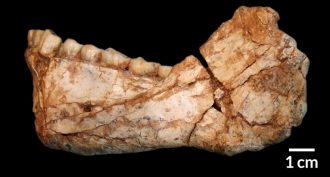 Fossils
FossilsStudy claims to have found oldest human fossils
Humans, as a species, may be much older than previously thought. They also may have evolved further North and West of the suspected cradle of human evolution.
-
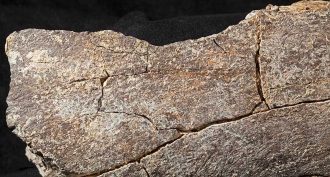 Archaeology
ArchaeologyAmerica’s first settlers may have arrived 130,000 years ago
An archaeological site where mastodon remains were found suggests that the first Americans may have arrived unexpectedly early.
-
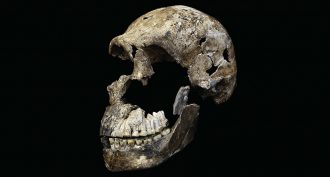 Fossils
FossilsThis hominid may have shared Earth with humans
Newfound fossils in South Africa point to a far more recent age for Homo naledi than had been accepted. If correct, this hominid might have coexisted with humans — even interacted with our species.
-
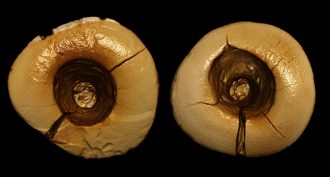 Archaeology
ArchaeologyStone Age dentists treated cavities with tar
Is Italy the home of dentistry? That’s where treated tooth decay has been found, dating back 14 millennia. Cavities appear picked clean with sharp tools. Ouch!
-
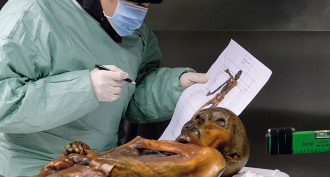 Health & Medicine
Health & MedicineÖtzi the mummified Iceman actually froze to death
Ötzi the Iceman, a mummy whose icy 5,300-year-old remains turned up in the Alps in 1991, died of the cold — not murder. That’s the result of new forensic analyses.